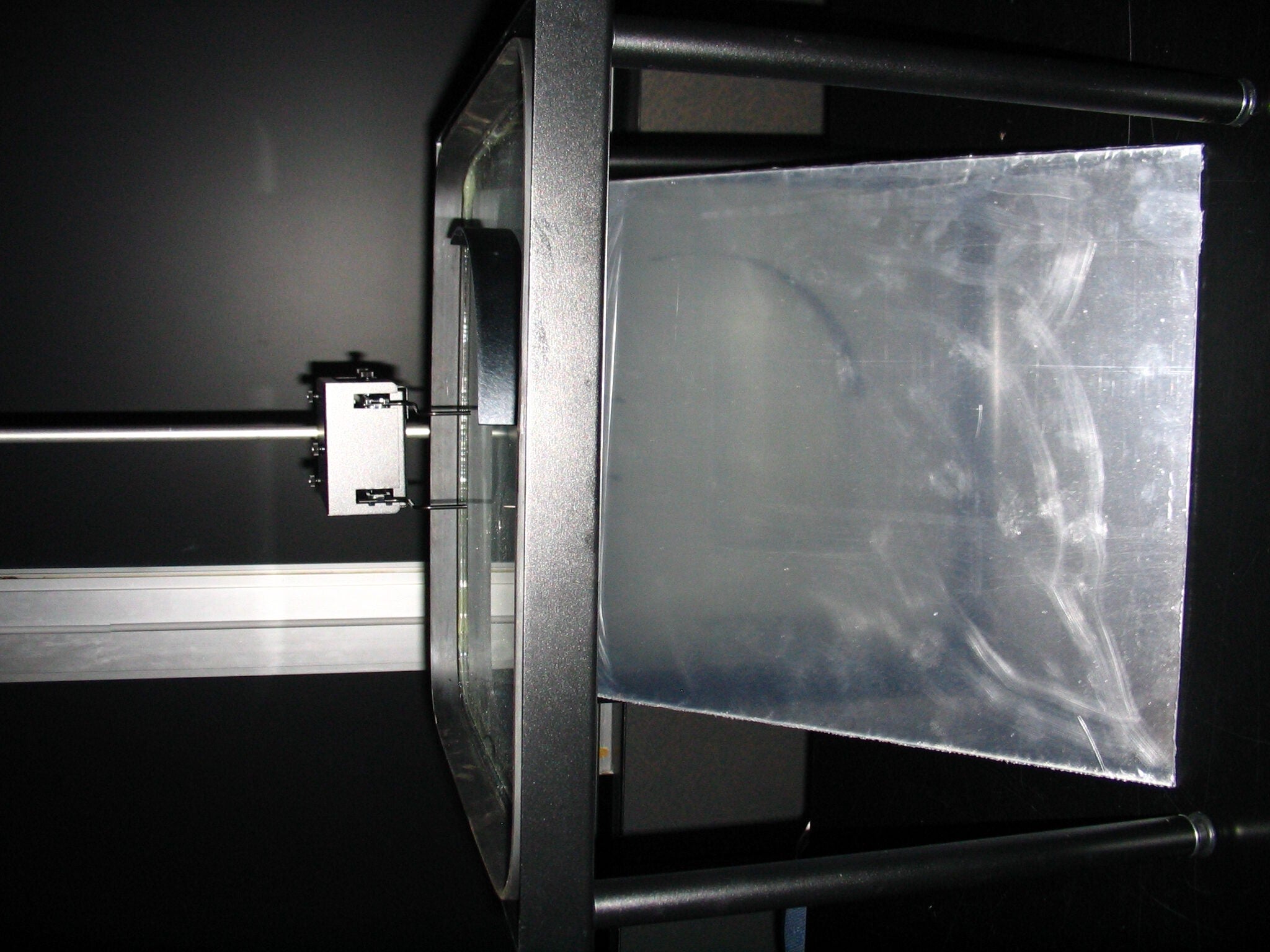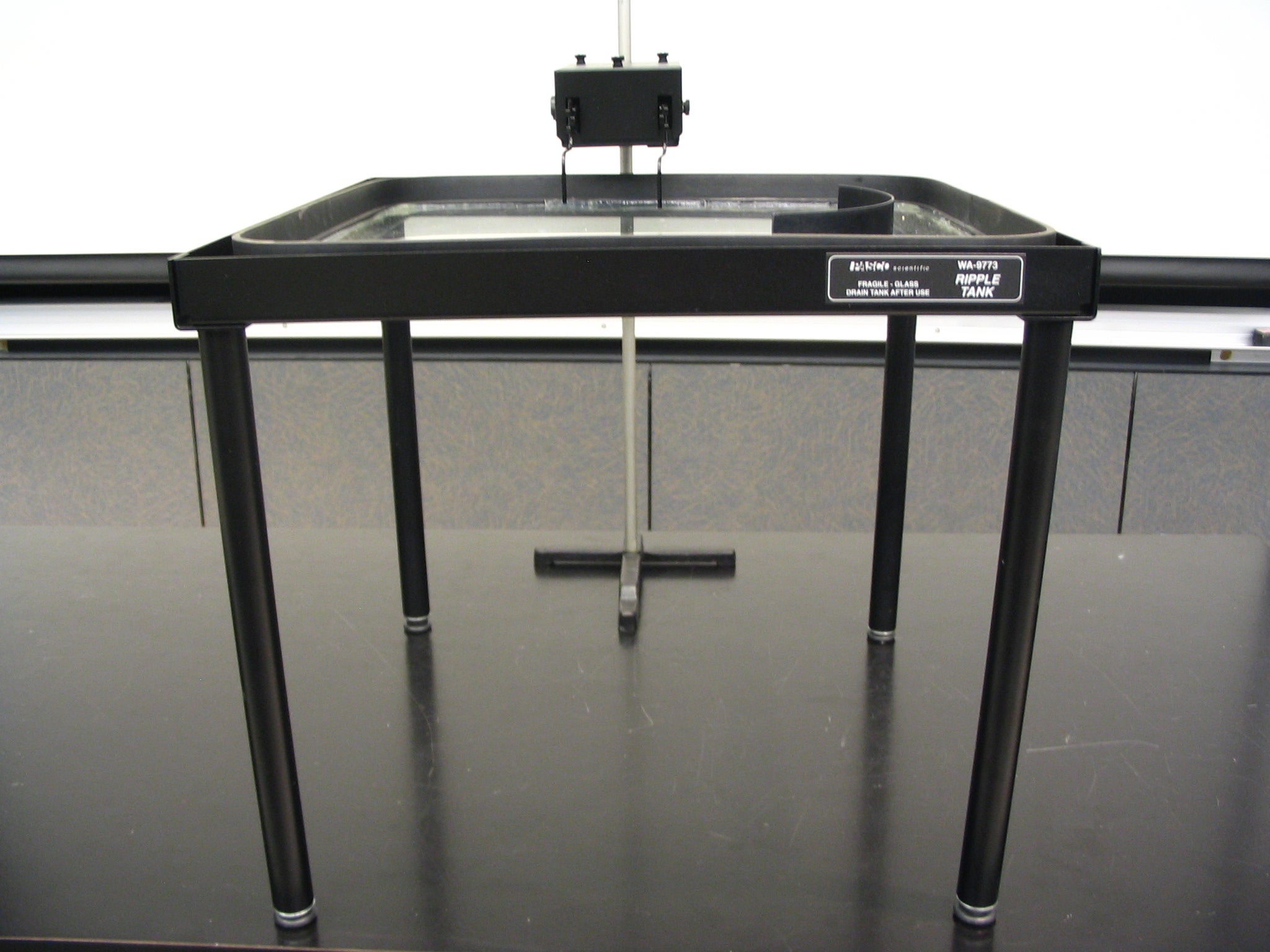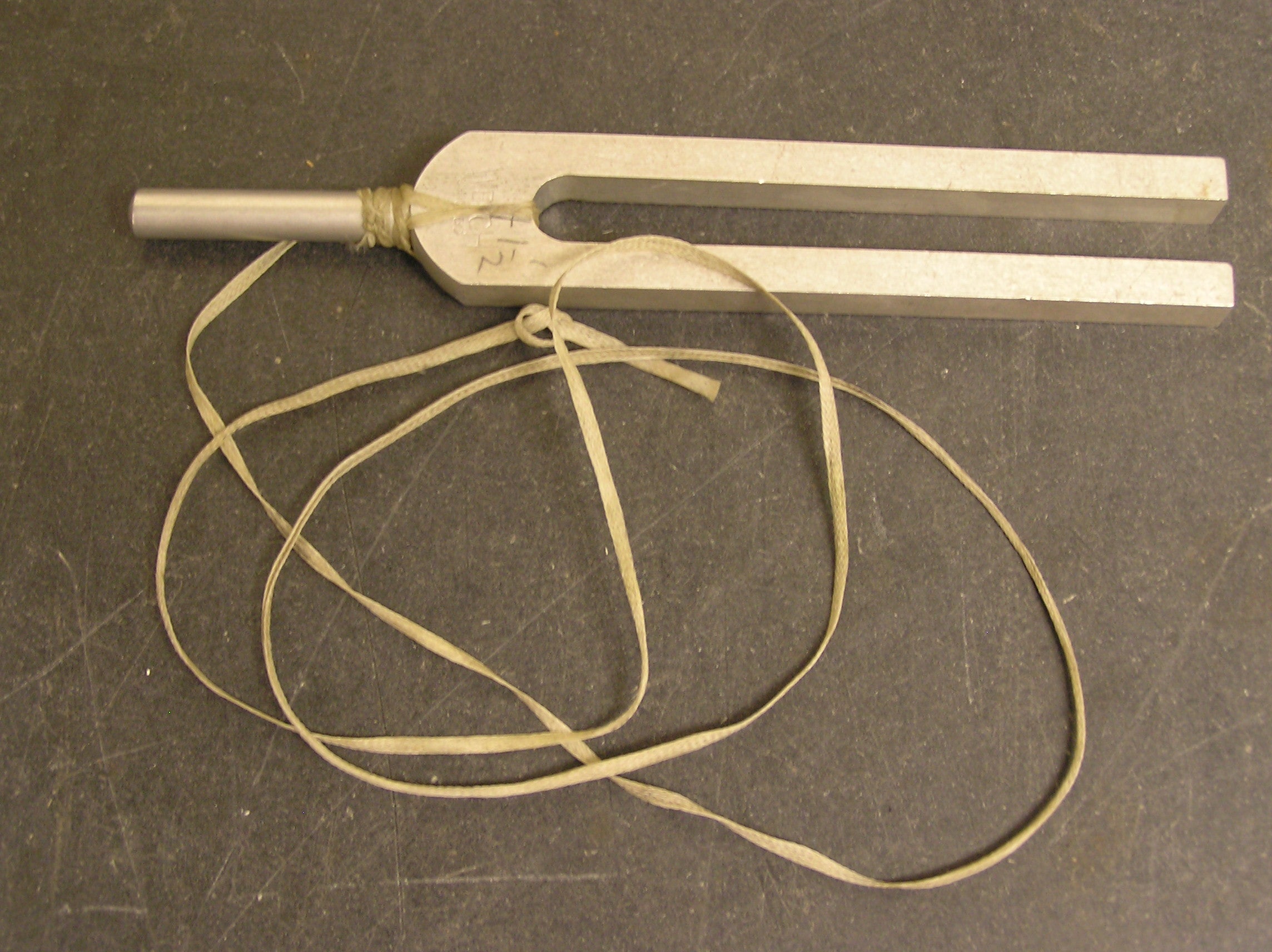W.7(1) – Ripple Tank
Doppler effect is easily and effectively demonstrated using a point source producing circular waves with their origin near the center of the tank. With the wave generator’s frequency adjusted to about 10 Hz, move the stand that holds the wave generator from left to right and back. The waves preceding the source are compressed, those following it are spread out.


W.7(2) – Swinging a Tuning Fork
In this demo Doppler effect is demonstrated by swinging a vibrating tuning fork as shown below. The tuning fork has a string attached to its stem. Hit it with the provided rubber hammer and rotate it on an horizontal plane above your head. The class should be able to hear the changes in pitch


W.7(3) – Spinning Whistle
This apparatus is designed to show that the pitch of a sound changes depending on whether the source is moving towards or away from the listener. The apparatus can be set on a manual rotator or on a motor-driven rotator, at a moderate speed. One can also choose between blowing steadily into the rubber tubing and mouthpiece, or attach the rubber hose to the air supply faucet. As the whistle rotates in a circle, the listener will hear a different pitch depending on the direction of its motion relative to the listener.
W.7(4) – Doppler Rocket
The Doppler Rocket emits a sinusoidal sound waveform at a constant frequency of approximately 620 Hz. As the rocket passes the students, they hear a noticeable shift in frequency.
